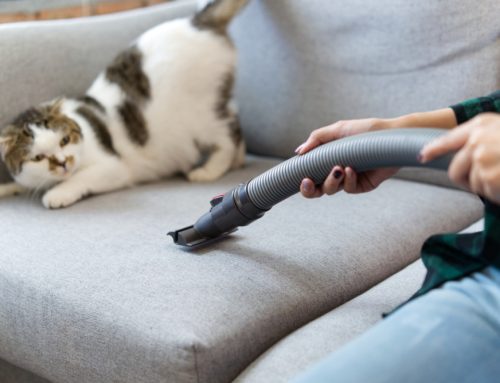In Montana, we don’t mess around when it comes to cold weather. While we know what precautions we should take before venturing outdoors in the midst of winter, your pet likely needs additional help to stay safe when frigid temperatures hit. Follow these six tips to keep your furry friend comfortable while enjoying our winter wonderland to the fullest.
#1: Soothe your pet’s dry skin
While we slather our dry, cracked hands with moisturizing products to soothe our sore skin, we can’t do the same for our pets. Help your pet by using a humidifier to boost the air moisture in the room where she spends most of her time, and by adding high quality fish oil to her diet to increase her intake of fatty acids, which are great for skin and joint health. Ask us for our favorite omega-3 product.
#2: Protect your pet’s paws from ice and snow
Although avoiding every ounce of snowfall during a Montana winter is impossible, you can create a safe haven for your dog to do her business outdoors. If you aren’t a fan of shoveling after every blizzard, erect a canopy tent, complete with sides that will act as a buffer against icy wind gusts, for your pet to use as a snow- and ice-free elimination station. If your canopy blows away or collapses under mounds of snow—we cannot be held responsible for any canopy damage—suit up your pet with paw balm or doggy booties to create a protective layer between her paws and the ice and snow.
#3: Pamper your pet with appropriate cold-weather grooming
The weather may have turned frigid, but that doesn’t mean you can skip grooming your pet. Routine brushing disperses essential oils necessary for skin health and prevents mats, which can prevent your pet from regulating her body temperature. Instead of a short summer cut, allow your pet’s fur to grow, and trim as needed, including the hair between her toes to help prevent ice balls from forming.
During your pet’s winter grooming sessions, bathe her as little as possible to avoid stripping healthy oils and drying out her skin. If a bath is necessary, stick with soap-free or moisturizing shampoos.
#4: Monitor senior pets for osteoarthritis flare-ups
Like people, senior pets experience more aches and pains in cold, damp weather. Older pets who suffer from osteoarthritis can become more uncomfortable during the winter, so pay special attention and watch for signs of discomfort. If your furry friend is slow to rise, has difficulty with stairs, or is unable to sit normally, we offer a variety of modalities, including acupuncture and laser therapy, along with traditional pain medications, to help alleviate your pet’s aches and pains.
#5: Ensure your pet has a warm place to sleep
While many dogs prefer the cool surface of tile and hardwood floors in the summer, those floors can become chilly and uncomfortable during the winter, so ensure there’s an additional layer between your pet’s bed and the floor, to block the chill from seeping through. Check for cold drafts and avoid placing your pet’s bed near doors. Watch for warm pockets, too, as young and old pets cannot regulate their body temperature well, and can become too warm next to fireplaces, wood stoves, and space heaters.
#6: Leave your pet safely at home

Most pet owners are aware of the dangers of a hot car, but may not consider how frigid—and dangerous—a vehicle can become during a Montana winter. You’ve likely experienced how quickly the temperature inside your car can drop as soon as you cut the engine. Pets who are young, old, ill, thin, or short-haired have difficulty maintaining a proper body temperature and can rapidly become chilled.
When traveling with your pet during the winter, you never know when road conditions can deteriorate, or a freak snowstorm may appear. If you must take your pet, always take food, water, bedding, and your pet’s medications, to be prepared for an emergency. But, if at all possible, leave your pet at home to curl up on her cozy bed, rather than braving a snowstorm for a trip to the grocery store.
If your pet experiences an icy slip-up this winter, give us a call.








Leave A Comment